The question is not whether
Red Dawn is a good movie. It is a bad movie. As the crazed ghost of
Louis Althusser might say, it has always already been a bad movie. The question is: What kind of bad movie is it?
(Aside: The question I have received most frequently when I've told people I went to see
Red Dawn was actually: "Does Chris Hemsworth take off his shirt?" The answer, I'm sorry to say, is no. All of the characters remain pretty scrupulously clothed through the film. The movie's rated PG-13, a designation
significant to its predecessor, so all it can do is show a lot of carnage, not carnality. May I suggest
Google Images?)
My companion and I found
Red Dawn to be an entertaining bad movie. I feel no shame in admitting that the film entertained me; I'm against, in principal, the concept of "guilty pleasures" and am not much interested in shaming anybody for what are superficial, even autonomic, joys. (That doesn't mean we can't examine our joys and pleasures.) No generally-well-intentioned, "diversity"-loving, pinko commie bourgeois armchair lefty like me can go into a movie like
Red Dawn and expect to see a nuanced study of geopolitics. I knew what I was in for. I got what I expected: a right-wing action-adventure movie based on a
yellow peril premise.
Red Dawn is an unironic remake of a
1984 movie predicated on paranoid right-wing fantasies; it's not aspiring to even the most basic
Starship Troopers-levels of intertextuality and metacommentary. There's none of the winking at the audiences that fills so many other 1980s remakes and homages (e.g.
Expendables 2, which relies on the audience's knowledge of its stars' greatest hits — the only convincing performance in the movie is that of Jean-Claude van Damme, who, apparently overjoyed to be released from the purgatory of straight-to-DVD movies, plays it all for real, and becomes the only element of any interest in the whole thing). The closest
Red Dawn comes to acknowledging its position in the cinemasphere happens when it turns the first film's very serious male-bonding moment of drinking deer blood into a practical joke, giving the characters a few rare laughs.
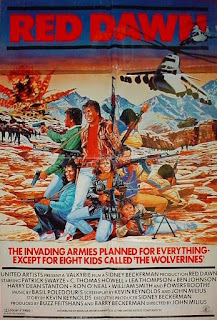
What are we supposed to feel good about in this movie? The 1984
Red Dawn was not even remotely a feel-good movie, but it gave us a space in which to feel proud of an idea of America that could survive even the most devastating attack by the Soviet Union (and its Latin American minions). It made a point of showing concrete objective correlatives for the abstract idea that is "American freedom" — the one that was most impressed on me by my father when we first watched
Red Dawn together was the scene where Soviet soldiers talk about going to a gun shop to collect the federal
Form 4473s, and using them to track down gun owners. This, to my father and many other people, demonstrated exactly why even the most minimal type of registration of guns is not merely annoying, but a threat to freedom. I vividly remember
my father saying, "If the Russians come, we burn those damn forms."
Red Dawn was not merely an action movie; it was a documentary.
But
Red Dawn was a movie made during a time when the U.S. was not officially at war. It appeared in U.S. theatres less than a year after the
invasion of Grenada, and just at the time when the actions that would eventually become the
Iran-Contra Scandal were making their way into the public consciousness. The hawks of the Reagan administration needed the public to be both patriotic and fearful of the Red Menace, because otherwise it was difficult to justify the massive transfer of wealth into the Pentagon.
Red Dawn did that better than any other movie of the time. (For much more on this background, see the article by J. Hoberman in the Nov/Dec 2012 issue of
Film Comment.)
Now, though? The new
Red Dawn comes as the Iraq war is winding down and the war in Afghanistan (our
longest) may be nearing some sort of end. (And then, of course, there's
Libya.) But these have been wars where we have been invaders fighting insurgents. They have been long, unfocused wars with no clear victory conditions. They began with some popularity and unanimity of public opinion, but the longer they went on, and the more that people learned about them, the less popular they became. They continued because the U.S. military is, while a huge part of the national budget, not a particularly concrete and visible part of everyday life and concern for many Americans. Without the threat of a draft, and with the rise of long-distance and drone strikes, most Americans can ignore the immediate reality of American wars, the hundreds of thousands of deaths and injuries on every side.

It's in what the new
Red Dawn makes us attach our feelings of pride, joy, and power to that it really differs from its predecessor, because the idea of America that it presents is neither particularly clear nor the product of much conviction. There are flags and some general genuflecting in the direction of "freedom", but the original
Red Dawn offered a vision of how its idea of "freedom" actually works in the world, and what threatens it. There was an attempt at creating a certain amount of plausibility and verisimilitude — one of the advisors to the original film was
Alexander Haig, Reagan's former Secretary of State, who worked with writer/director
John Milius to craft what seemed to them a relatively realistic invasion scenario, the weapons and vehicles were as realistic as could be accomplished without being able to buy actually Soviet weaponry (the CIA inquired about the tanks after seeing them being moved to the set; later, the Pentagon used images of them to train the guidance systems in spy planes), and the tone is dark, with war presented as hell for both sides. Milius made numerous references to his masculine hero Theodore Roosevelt, and the vision he presented was stark, painful, and apocalyptic, more
Hobbesian than
Amurrican. It was
Panic in Year Zero! by way of
The Battle of Algiers.Ours is the Age of the Tea Party, not the Age of Reagan, and so the new
Red Dawn is closer to the ideological vision of
The Patriot than that of its original source.
The Patriot is the story of a man in Colonial America who doesn't see much point in fighting against the British until his own family is affected, at which time he becomes a psychopathic vengeance machine, and then at the end returns home to a small community not to help build up a new government or create the idea of a common United States, but to become the leader of a little utopian plantation. (He had already been leader of a utopian plantation before the war, because the black people doing work on his property were not actually slaves, but free employees. Really. As William Ross St. George, Jr. wrote in his
review (PDF) of the film for the
Journal of American History, this must have been "the only such labor arrangement in colonial South Carolina".) What matters in
The Patriot is not country or government — all government is portrayed with contempt in the film — but rather self-reliance and, especially, family. Despite the movie's title, it's not about being a patriot, but about being a loyal, strong, independent, and avenging father.
The new
Red Dawn, much more than the original, is also a movie about families and fathers. Jed, played originally by Patrick Swayze and in the new film by Thor, is now an Iraq vet who struggled to be a good son to his father and, especially, a good brother to Matt (originally Charlie Sheen, now Josh Peck). Lots of family melodrama is alluded to. The boys don't visit their father in a re-education camp; instead, the Evil Korean Guy (whose name I thought was Captain Joe, but IMDB tells me it's Captain Cho. I prefer my version), who for some unfathomable reason recognizes from the very first moment that Teenagers Are The Enemy (he was probably a high school teacher back home), rounds up their fathers, brings them to the Evil Dead Cabin where the kids had been hiding out, and makes the fathers plead with the kids to come in. Of course, the weak and collaborating mayor pleads with them to give themselves up, but the strong and noble father of Jedmatt (in a much blander performance than the clearly unhinged and perhaps psychopathic man portrayed by Harry Dean Stanton in the original) instead tells them to fight to the death, causing Captain Joe to channel his inner
Nguyen Ngoc Loan and shoot him in the head. Oh dad, poor dad. Jed and Matt then go on to learn how to be good brothers to each other, just in time for— Well, you don't want to know the ending, do you? (For a moment, I thought it would turn out to be a movie climaxing with brotherly kisses and fellatio, but, alas, it did not. Well, not exactly. Although the more I think about it...)
We have to talk about the ending, though, because we have to talk about who lives and who dies. The original
Red Dawn was not
Rambo — while it certainly stirred up feelings of patriotism against the Soviet enemy, and admiration for the U.S. military, its tone isn't all that far away from
The Day After. The end is a downer, but it's not nihilistic. We zoom in on a memorial plaque, its words read to us on the soundtrack: "In the early days of World War III, guerrillas, mostly children, placed the names of their lost upon this rock. They fought here alone and gave up their lives, 'so that this nation shall not perish from the earth.'" The memorial asserts that these lives were lost for a great cause, and by quoting the Gettysburg Address, it connects their sacrifice to that of soldiers who fought to preserve not just some idea of Americanism, but the union itself.
The remake turns patriotic tragedy into personal tragedy — Jed is killed just at the moment when he has reconciled with his brother. Toni (
Adrianne Palicki in the remake,
Jennifer Grey in the original) and Matt both survive in this version, along with many of the other Wolverines. Well, the white Wolverines.
The new
Red Dawn isn't just a yellow peril movie, it's a vision of white supremacy. Only one nonwhite Wolverine has much of an identity (Daryl, played by
Connor Cruise), and the others die pretty quickly. Finally, Daryl is, without his knowledge, injected with some sort of tracking device that can't be removed from his body, so he's given some supplies and left to wander away, probably to be killed by the North Koreans. Almost all of the white Wolverines survive, presumably with a new understanding of the miraculous powers of their skin color.

Remember what happened to (white) Daryl in 1984? His sleazy father (the mayor) forced him to swallow a tracking device. He knew it was in him. After barely surviving the assault that followed, the Wolverines take him to the top of a freezing mesa with a captured Russian soldier and get ready to execute him. Jed and Matt fight about it, with Matt saying it will make them worse than the Russians. Jed kills the Soviet soldier, but doesn't seem to be able to kill Daryl. Robert, whose experiences have fully brutalized him, shoots Daryl. It's a wrenching, disturbing scene. Again and again, the original
Red Dawn says: War is a horrific, destructive experience for everyone involved, and it reduces us to our most animalistic natures — naming the guerrillas
Wolverines was not merely the naming of a mascot or a rallying cry, it was a statement of what they had become.
The new
Red Dawn doesn't hurt. It's superficially entertaining in a way that the original is not. Sure, it's shocking that Jed dies, but the way that scene is set up and edited highlights the shock, not the pain. In the original
Red Dawn, Jed and Matt know they're heading out on a suicide mission. Jed survives a little while longer only because the Cuban Colonel Bella (
Ron O'Neal) feels some respect or sympathy for him and is tired of the whole war. Jed1984 kills the Super Nasty Russian Bad Guy, just as Jed2012 kills Capt. Joe (with his father's gun, because they just happen to be in Dad's Police Station!), but the original film then takes the brothers to a frozen park, where, mortally wounded, they sit together on a bench and drift off to eternity.
The new
Red Dawn instead puts its concluding weight on the idea that you probably shouldn't trust the black guy, even if he's friendly and well-intentioned. He's probably got a tracking device in his blood. Even though he doesn't want to be, he's a traitor. Best to leave him in the wilderness. This in a movie that begins with a montage showing us that President Obama and his minions are ineffective at defending us from the North Koreans (and their secret Russian puppetmasters).
The original
Red Dawn had an unabashed political purpose — it warned us not to let our guard down, it encouraged us to support massive increases in defense spending, it encouraged us to stockpile guns and canned goods. It especially wanted us to call our congresspeople and tell them to support funding for the Contras and similar anti-communist forces. The September 1984 issue of
Soldier of Fortune magazine includes an article about
Red Dawn's production, particularly its weaponry, that begins: "Military strategists have often discussed the repercussions of a communist takeover of Central America. One worst-case scenario has the Soviet Union training Cubans and Nicaraguans in the offensive use of advanced weapons such as the MiG 25 and T-72 tank." The article ends:
Red Dawn seriously attempts realism. Milius spent $17 million trying to give the American public a taste of what Soviet weaponry, tactics and occupation practices are all about.
Liberal critics will howl about Reagan's deleterious effect on the creative arts and scream that Red Dawn is unabashed saber-rattling propaganda. It sounds like our kind of movie.
Red Dawn opens across the country on 17 August.
So yes,
Red Dawn was propaganda in 1984. But it was not
merely propaganda; there is cleverness and even humanity to it. It's an action/survival movie, so character development isn't a particular goal, but where it spends it moments of character development are telling. Instead of just building of family melodrama, the original
Red Dawn gave humanity to some of the antagonists (particularly Colonel Bella). While the Soviet commanders are cartoons, the Russian soldiers are clearly just as trapped in the horrific logic of war as the Wolverines.
The new
Red Dawn also wants to be propaganda, as the opening montage shows us. But there are more subtle connections to not just right-wing militarism, but extremist nuttiness. The key is three letters: EMP.
How do the bad guys invade North America? They wipe out the American defense infrastructure, and apparently the entire American military, by setting off at least one
electromagnetic pulse (EMP). Now, EMPs are real. Boeing is even
developing an EMP missile. But who gets really excited at the idea of an EMP knocking out electronic infrastructures? The apocalypse addicts at
WorldNet Daily. Famed doomsayer Newt Gingrich
brought it up during the Republican primary. Right-wingers get positively giddy at the idea.
Why? Because it
justifies lots of spending on missile defense. But
according to the right wingers, President Obama is not spending nearly enough money to defend us from missiles. We could be wiped out at any moment by an EMP. But the weak, appeasing black guy in the White House is, whether he knows it or not, a traitor.
The politics of the new
Red Dawn are about as coherent as those at a Tea Party rally, where really the only unifying theme is hatred of anything that can be called "government" (and doesn't contribute to the life and happiness of the complainer), hatred of the Socialist Kenyan Muslim Manchurian President Nazi Obama, and love of weaponry.
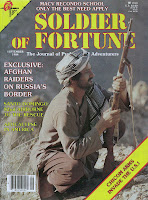
Whatever can be said about John Milius, at least he was committed enough to his concept to have thought it through. The new
Red Dawn seemingly unintentionally opens itself to all sorts of odd moments, such as when Jed says, "When I was overseas [in Iraq], we were the good guys, we enforced order. Well, now we're the bad guys. We create chaos." In 1984, when the Wolverines went into the desert on horses, they evoked images of the
Mujahideen in Afghanistan. (The cover of that September 1984 issue of shows a guerrilla and the headline "Exclusive: Afghan Raiders on Russia's Border".) In 2012, when a character talks about the order enforced in Iraq, it's hard not to think about all the insurgents created by the chaos of the American invasion. When the Wolverines are called "terrorists" by their enemies, who doesn't think of the War on Terror? No wonder the U.S military has been disappeared by the new
Red Dawn (instead of being assisted by active duty soldiers, the Wolverines are assisted by
retired Marines). Nobody can forget that the U.S. military of the 21st century is an invading force. In 1984, the U.S. wanted to arm and train the "freedom fighters" of the world. In 2012, insurgents and terrorists "hate our freedoms".
In the nearly thirty years between the two films, gender roles seem to have become more confining. There weren't many women in the original
Red Dawn, but Toni and Erica (
Lea Thompson) in the original were interesting, active characters. They were stereotypically, tragically traumatized by something that happened with the Russians (likely, rape), so much so that their grandfather hides them in the cellar, but though they remain traumatized and quiet, they also assert themselves against the assumptions of the men, and (like the women in
Battle of Algiers) prove to be excellent, committed guerrillas, and more resilient than many of the men. When she dies, Toni makes sure she takes at least one Russian with her. The women of the original
Red Dawn do not end up as objects of our pity or our lust, but rather of our respect.
Toni and Erica both survive in the new
Red Dawn, but that's about all they have going for them. Erica is a sharp-cheeked blonde (
Isabel Lucas) whose entire job in the movie is to be gawked at and pined for — Matt is so in love with her that he repeatedly risks the safety of the Wolverines to save her. (Girls are dangerous! They make boys stupid!) Once her role as the Imperiled Love Interest is over, she mostly disappears from the movie. Toni exists primarily to help Jed get in touch with his emotions. Her costumes tend to highlight her figure (the opposite of the costumes in the original film), and though she gets to shoot stuff and blow things up like everybody else, there's little sense of her as an integral member of the unit.
One of the problems for the new film is that it doesn't really know what to do with its characters. The mayor is set up to be just as sleazy and appeasing as the original, but nothing much is made of his story. He's just another weak, naive black guy. But that's what happens when you allow black people into government, as we should have learned from
Birth of a Nation. While the original
Red Dawn ended by invoking Abraham Lincoln, the new
Red Dawn conjures the glory days of the John Birch Society.
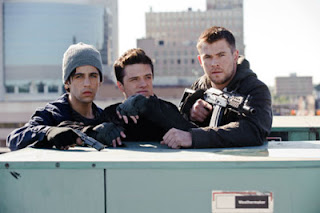
But I'll end where I began: It is entertaining while it lasts. There's lots of action, lots of explosions. Some of the action is badly filmed — a car chase in the beginning is particularly incoherent, much to its detriment, because though part of the point of this action is to get us excited for our protagonists in peril, it also has some information to convey, and it can't do it because it's so badly shot and edited. There is moment-to-moment excitement. But though I went into the film determined to give it the benefit of the doubt, soon the entertainment was at least partially because of the film's idiocies. It's breathtakingly racist, but I also found it difficult to be disturbed by its racism, because it was so obviously stupid that it was comic, and my companion and I kept nudging each about the blatant, self-parodying silliness.
However,
as Twitter showed, plenty of people found the movie inspiring, convincing, and powerful. Its political message got through. Its racism buttressed the inherent racism of many people who went to see it during its opening week. Its ideology did some work in the world.
Thinking about that fact is very far from entertaining.
 Generally speaking, it’s a Bad Thing. I fume as much as the next author when I read one of those articles about a US school board voting to remove To Kill A Mockingbird or The Adventures of Huckleberry Finn from the library because of some imagined unsuitability. I thought the Daily Mail was a bit off with its recent suggestion that teen fiction dealing with issues like terminal illness or self-harm qualifies as “sick-lit” (and, no, I’m not going to provide a link; it’ll only encourage them to do it again).
Generally speaking, it’s a Bad Thing. I fume as much as the next author when I read one of those articles about a US school board voting to remove To Kill A Mockingbird or The Adventures of Huckleberry Finn from the library because of some imagined unsuitability. I thought the Daily Mail was a bit off with its recent suggestion that teen fiction dealing with issues like terminal illness or self-harm qualifies as “sick-lit” (and, no, I’m not going to provide a link; it’ll only encourage them to do it again). For those of you who know the book, when Hazel & his companions are in Cowslip’s warren, their hosts ask if one of them will tell a story. And the next sentence reads:
For those of you who know the book, when Hazel & his companions are in Cowslip’s warren, their hosts ask if one of them will tell a story. And the next sentence reads:




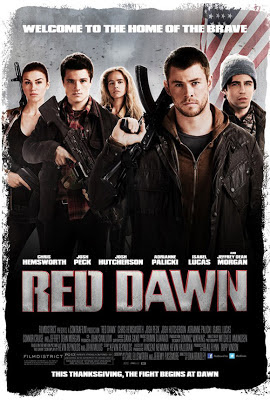






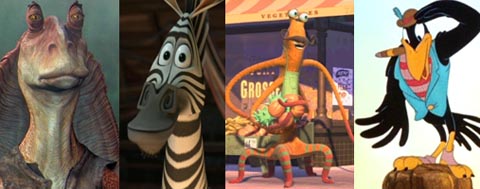


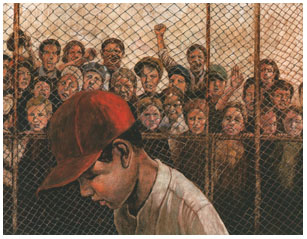
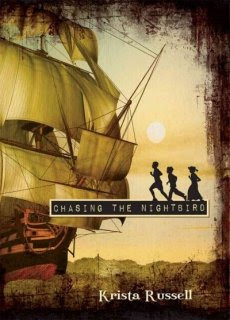




An interesting question, John. I think for me it would depend on the context in which I was reading. If it was a bedtime story, where the emphasis was on peaceful enjoyment and close engagement, I'd skip it. If it was the middle of the day (and the child was old enough to engage with the debate) I'd read the sentence and pause, giving them the chance to say something. If they didn't, I'd say something like 'that's a funny thing to say' and comment on passing time, prejudice changing attitudes.
prejudice *and* changing attitudes.
They're different activities/ways of engaging. Maybe better suited for happening at different times? Though your kids are unlikely to need convincing, having grown up with you!
It is indeed a tricky one. Of course, sometimes the publishers have been there before you, which can be problematic in another way. I remember reading the first page of Five Fall into Adventure (1950 - but in a 1980s edition) to my daughter: George's "arms and legs were as brown as a traveller's." Presumably trying to sidestep "gypsy", but toppling into nonsense. You have to be quick on your feet as a bedtime reader!
I think that if your aim was to read and enjoy the book with your children as you describe, you did just the right thing to follow that instinct.
There'll be other times for other - and maybe longer - talks with them, and you can always refer back to that moment in WD if you want to.
I really appreciate all the comments so far! Yes, I usually read to them at bedtime, and perhaps that was one of the reasons I censored.
Yeah, I'v done this with older books, especially old Pulp where there can be a background radiation of mild racism not part of the story.
Well, I'm not a writer. I do though come here occasionally to check out another world from my one.
I actually hate reading something that I know is bowdlerised. I think I would prefer to read it out as it's written. And for kids.., to insert quietly.. "Of course, they don't all fight.." or somesuch..
If they're 10 they seem old enough to learn about prejudgment, not be hidden from it.
That's a fair point, Andrew; and I hope I do teach them about prejudice in other ways. Is there a real difference, do you think, between removing a phrase from the text and adding one that's not in there?
This comment has been removed by the author.
This is all very new to me and this article bridal wedding dress, celebrity dresses, machine tattoos really opened my eyes.Thanks for sharing with us your wisdom.
Fascinating, and I agree it depends on context - if you are reading aloud to kids there are all sorts of things you might omit for all kinds of reasons.
But - to stir a bit - times have changed in all kinds of ways, and Adams may not even have intended any kind of negative connotation? The phrase might imply - have a strong sense of honour and therefore don't back down, even when things get rough - a different code, but not necessarily meant to be derogatory?
I'm with Emma here - I always interpreted that remark as a compliment, referring to courage and honour, not a tendency towards violence per se.